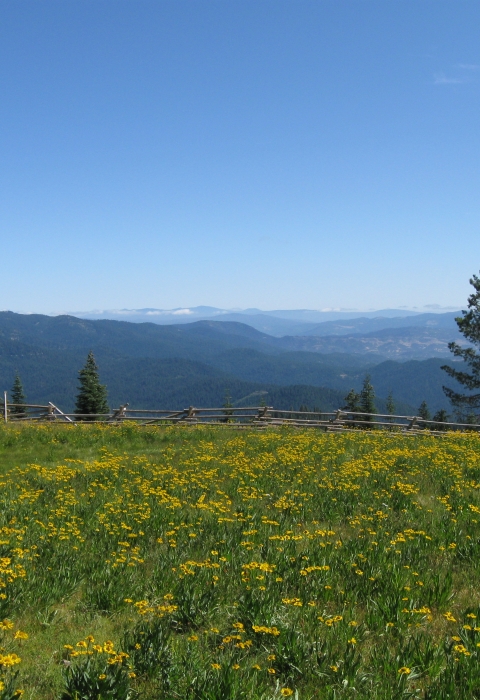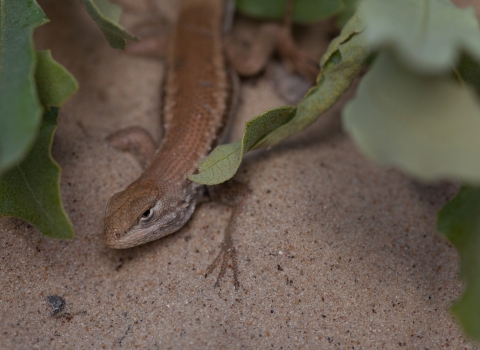KLAMATH FALLS, Ore. — The U.S. Fish and Wildlife Service today announced nearly $64 million in funding from President Biden’s Bipartisan Infrastructure Law for ecosystem restoration activities that address high-priority Klamath Basin water-related challenges in southern Oregon and northern California, with an additional $6 million in funding from other infrastructure investments.
The announcement comes as the Klamath Tribes, Yurok Tribe, Karuk Tribe, Klamath Water Users Association, and the Department of the Interior announce a historic agreement to advance collaborative efforts to restore the Klamath Basin ecosystem and improve water supply reliability for Klamath Project agriculture. The Department has also launched the Klamath Basin Drought Resilience Keystone Initiative, one of nine key conservation initiatives through a new restoration and resilience framework that will guide $2 billion in investments from the Bipartisan Infrastructure Law and Inflation Reduction Act.
“Two years in, President Biden’s Bipartisan Infrastructure Law is providing critical funding for the Service to better support locally led conservation projects; improve public access; protect people, infrastructure and wildlife habitats; and rebuild the ecological infrastructure of the Klamath Basin,” said Service Director Martha Williams. “With the help of our partners in the Klamath Basin, we have been able to use this historic investment to build momentum toward our goal of a drought-resilient and restored ecosystem in this region.”
Today’s funding adds to $16 million announced in 2022 from the Bipartisan Infrastructure Law to support 32 shovel-ready restoration projects throughout Klamath Basin and an additional $10 million for the expansion of the Klamath Falls National Fish Hatchery, which works to enhance captive-rearing of Endangered Species Act-listed suckers that hold deep cultural significance for the Klamath Tribes.
Through the Bipartisan Infrastructure Law, the Service is investing a total of $162 million, over five years, in work to restore the regional ecosystem and repair local economies in the coming years. These investments will fully fund completion of the Klamath Falls National Fish Hatchery by 2027, secure reliable water for the National Wildlife Refuges, focus on innovative collaborative conservation in the Sprague River watershed, advance co-developed restoration projects with stakeholders, and continue implementation of Tribally led projects throughout the Basin.
Examples of projects announced today include:
Klamath Basin Co-Development Process, $25,000,000– Funds will be made available for the development of restoration projects in the Klamath Basin that will help resolve on-going water-related conflicts. Projects will be required to have broad support throughout the Klamath Basin and be linked to the Service's top priorities for the Klamath Basin. Project proposals that are developed through this process will be reviewed by the Service and Department of the Interior officials who help oversee Klamath Basin restoration initiatives.
Completion of Klamath Falls National Fish Hatchery, $20,000,000 – The Klamath Falls National Fish Hatchery investment will increase rearing capacity and help prevent extinction of two federally listed species found only in the Klamath Basin, the Lost River and shortnose suckers (C’waam and Koptu).
Sprague River Collaborative Restoration (Phase 1), $6,000,000 – This project will provide instream and floodplain restoration along 26 miles of headwater streams in the Sprague River Watershed, develop cost-level design plans and baseline monitoring for instream and floodplain restoration of the mainstem Sprague River, and develop a landowner incentive program to encourage landowner participation in restoration programs and retain economic viability for family farms and ranches. The Sprague River Collaborative Restoration Project emphasizes a commitment to voluntary, incentive-based approaches and identifies the critical role of Tribal and working lands to ecosystem restoration. This project also stresses the importance of supporting Indigenous knowledge and sovereignty and landowners’ interests and rights, with the support of federal, state, and local conservation programs.
Upper Williamson River Restoration, $2,000,000 – Funding will be used for restoring the historical hydrology within the Klamath Marsh through the removal of TPC, Middle, and House bridges and restoration of roughened channels. Additionally, the Cholo Diversion will be demolished and replaced with a horizontal flat plate screen and headgate structure. These restorative efforts will improve habitat for resident fish, wildlife and migratory species, and remove barriers to fish passage fish passage
Fish passage is the ability of fish or other aquatic species to move freely throughout their life to find food, reproduce, and complete their natural migration cycles. Millions of barriers to fish passage across the country are fragmenting habitat and leading to species declines. The U.S. Fish and Wildlife Service's National Fish Passage Program is working to reconnect watersheds to benefit both wildlife and people.
Learn more about fish passage .
The Service has allocated an additional $6 million in infrastructure funding to complement the Bipartisan Infrastructure Law projects in the Basin, with $4 million allocated for the reconnection and restoration of Agency Lake and Barnes units of Upper Klamath Lake. This project will increase water storage and fringe wetland habitat on approximately 14,000 acres that will benefit migratory waterfowl, restore historic stream channels, and improve water quality, habitat and passage for important fish and aquatic species in and around Upper Klamath National Wildlife Refuge. Additional funding will be used for restoration in the Lower Klamath National Wildlife Refuge and Klamath Drainage District areas.
In addition, the Service will engage Klamath Basin conservation partners in the coming year to develop a conservation and restoration project database and interactive map. This tool will track and describe conservation work in the Klamath Basin for the public and help to coordinate restoration efforts among partners in the Basin. It will also house and provide access to important data sets that can help drive long-term restoration success and support science and research efforts.
See a full list of Klamath Bipartisan Infrastructure projects here: Bipartisan Infrastructure Law: Klamath Basin restoration | U.S. Fish & Wildlife Service (fws.gov)
Examples of funded Bipartisan Infrastructure Law investments may be found in the Service’s Bipartisan Infrastructure Law 2022 Annual Report and photos may be found in the Klamath Basin photo gallery.
###



